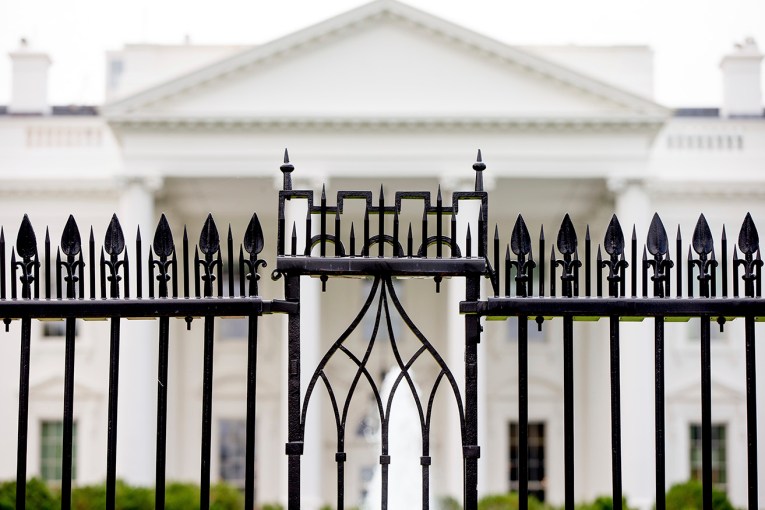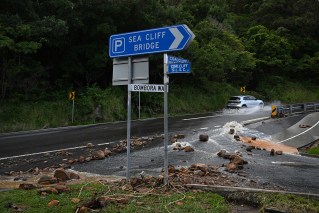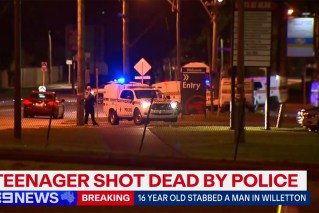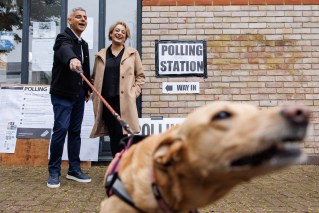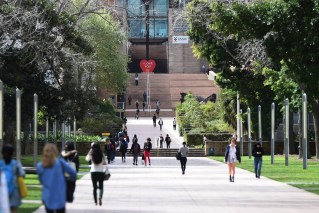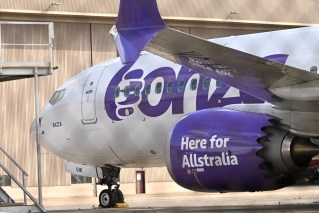20 million vaccines to go: The four-phase reopening plan explained

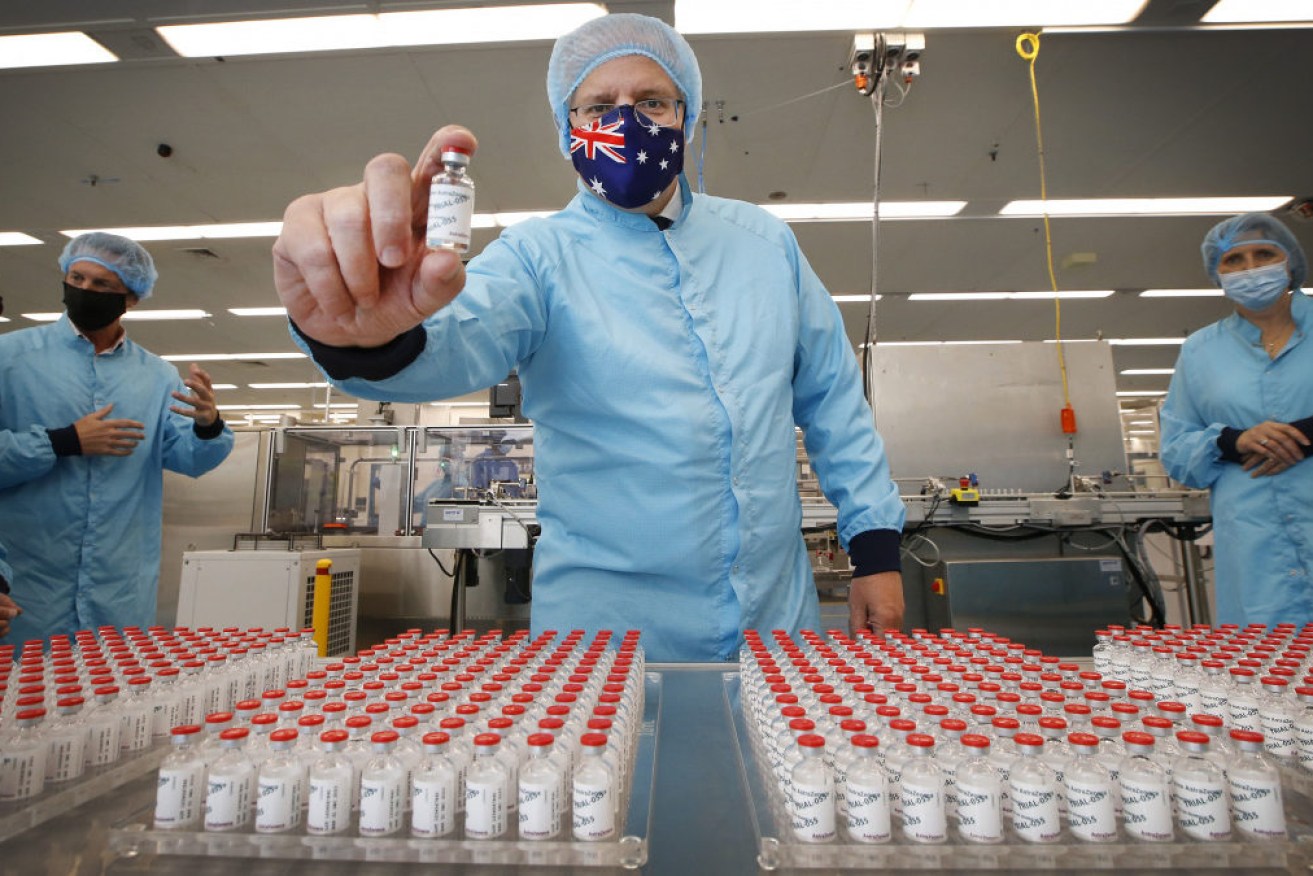
Emails show Pfizer approached the government offering "millions" of vaccines in 2020 Photo: AAP
Australia is still 20 million vaccine doses away from hitting targets to reopen international borders and end lockdowns, but current trends show the target could be met by the end of the year.
The goals of hitting 70 and 80 per cent vaccination to move through Scott Morrison’s “four-phase plan” are not only achievable, but could happen sooner than forecast, a leading epidemiologist said.
So what’s the plan? And what numbers do we need to get there?
The four-phase plan to COVID normal
Mr Morrison gave a twilight press conference from The Lodge on Friday evening, to unveil the latest on his ‘four-phase plan’ to ease COVID rules.
We’re currently in ‘Phase A’.
The next, Phase B, includes changes like “eased restrictions for vaccinated residents”, “low-level” restrictions, increasing traveller arrivals and making “lockdowns less likely”. That needs 70 per cent of people aged 16 and above to be vaccinated.
Phase C, with a target of 80 per cent, includes only “baseline community restrictions”, and lifting inbound and outbound travel restrictions.

Scott Morrison details the plan. Photo: AAP
Phase D, lifting essentially all COVID rules, doesn’t have a specific vaccine target.
Mr Morrison said that’ll be determined in future, based on long-term vaccine efficacy and possible future virus variants.
The figures are based on “eligible population”, those aged 16 and above. Notably, it does not include children (more on that later).
Changes can be made in a state once the national vaccination rate, plus the vaccination rate in that state, hits the target.
How many people must be vaccinated?
The plan only carries a percentage figure, not raw numbers of vaccinations needed. It takes a bit of maths to figure out.
The federal health department’s vaccine statistics say the Australian population aged 16 and above is 20,619,959 people.
Taking 70 per cent and 80 per cent of that, is 14,433,971 and 16,495,967, respectively.
Two doses of vaccine are needed. That’s 28,867,942 and 32,991,934 vaccine doses for 70 and 80 per cent fully vaccinated.
Australia is at 19.04 per cent fully vaccinated with two doses, or 3,927,056 people.
Another 4,463,615 people have received first doses, for a total of 12.317 million jabs.
That means we’re roughly 16.55 million doses away from the 70 per cent figure, and 20.67 million doses from 80 per cent.
How long will it take?
When TND asked Mr Morrison at his press conference whether he expected we’d reach this mark by year’s end, he replied, “I would hope so”.
“We haven’t put timelines on this because the timelines are now in the hands of all Australians,” Mr Morrison said.
The current record daily vaccination figure is just over 200,000 doses a day.
🎯 Vaccination Tracker now on the https://t.co/6sqiT2yfpW
Separate tables for first and second doses.Days until 60% / 70% / 80% is based off the current 7d average. Percentages are 16+ population, pic.twitter.com/zOz7qxcCs2
— Anthony Macali OAM ☀️ (@migga) July 31, 2021
Anthony Macali, a data analyst tracking COVID cases and vaccines on his website COVIDlive.com.au, took data on the current rate of first and second doses, which are going at slightly different paces.
He calculated it could take 130 days to hit the 70 per cent target, and 156 days to 80 per cent.
That would be early December and early January 2022, respectively.
However, that’s based on current rates, which are quickening.
Mr Morrison and state premiers promised a “sprint” and significant boost in vaccinations when large supplies of Pfizer arrive in the final months of 2021.
On Saturday, New South Wales Health Minister Brad Hazzard said it was “hard to put a precise time on it” but guessed “four months or so” – putting it at early December.
“Certainly later this year,” Mr Hazzard said.
Deputy chief medical officer Michael Kidd on Sunday noted vaccination rates were continuing to increase.
Is 80 per cent enough?
The Grattan Institute, plus leading epidemiologists, have suggested an 80 per cent target. However, their modelling included children, not just adults.
Vaccinating 70 per cent of Australia’s 20.6 million adults would be only around 56 per cent of the total 25 million population including children. A goal of vaccinating 80 per cent of adults is only 65 per cent of the whole population.
Professor Catherine Bennett, chair in epidemiology at Deakin University, said the 70 and 80 per cent targets for lifting restrictions were higher than that of the United Kingdom before its July 19 “freedom day”, when only 68.5 per cent of adults were fully vaccinated.
She said Australia’s higher goal was a good move, considering few Australians had any virus antibodies from being infected.
“That looks about right. We don’t have that natural immunity from infection, so aiming for a slightly higher rate than the UK makes sense,” Professor Bennett said.
“Once we get 70 per cent vaccinated, you really reduce the number of people at risk.”
Will we get there?
Hesitancy and distribution are key issues.
Recent surveys from the University of Melbourne found about 22 per cent of Australians were ‘vaccine hesitant’ or wouldn’t get the jab.
The majority say they will get vaccinated, but those hesitancy numbers could be enough to put the 80 per cent goal out of reach.
However, Professor Bennett expected hesitancy to decrease, as the rollout progressed.
“Overseas, apart from the US, the pattern has been that it picks up as it goes. It’s not just about hesitancy. Lots of things affect people’s uptake of vaccines, like accessibility and preferences,” she said.
“Lots of things are encouraging indicators. Once they said under-50s could get AstraZeneca, thousands a week got it. We hear things in the media, but if you look across the country, people are getting on with it.
“Think what will happen when we open Pfizer to under-40s, with growing capacity and growing supplies. There are people sitting back now, but there will be motivation and realisation of outbreaks getting harder to contain.”
She suggested “some healthy interstate competition” could see vaccination targets hit even quicker.
“If we’re being competitive about contact tracing and lockdowns, we’ve got to get competitive about our vaccine numbers, too,” Professor Bennett said.
What about children?
No vaccines are currently recommended for use in children.
Australia’s Therapeutic Goods Administration recently approved Pfizer for use in anyone aged above 12, but that vaccine is currently not widely available for young people.
AstraZeneca is only approved for those over 18.
Many epidemiologists and public health experts believe Australia and the world will need to vaccinate children, potentially as young as six months.
“It doesn’t mean children won’t be included in the vaccine program,” Mr Morrison said last week, adding plans may be updated to vaccinate kids.

Indonesia began vaccinating its 12 to 17-year-olds in July. Photo: Getty
In NSW’s current outbreak, hundreds of children have been infected.
NSW Health figures, released on July 28, showed 458 of the 1861 cases – nearly 25 per cent – in the previous two weeks were aged under 19, including 188 aged under nine.
“We’re learning from outbreaks now, children will be really important. They’re at the core of transmission dynamics in pretty much every setting we’re seeing,” Professor Bennett said.
How much vaccine will Australia have?
Lots, based on current supply forecasts (or “horizons” in the latest government lingo).
The forecasts anticipate millions of weekly doses of AstraZeneca and Pfizer until the end of the year.
Adding another few million Moderna doses to the mix, the government is expecting between 44 million and 58 million vaccines to arrive in the country by the end of the year.
That’s not even counting Novavax, Australia’s other vaccine option.
The government has contracted 51 million doses, with some expected by year’s end, but Novavax faces significant production issues overseas.
